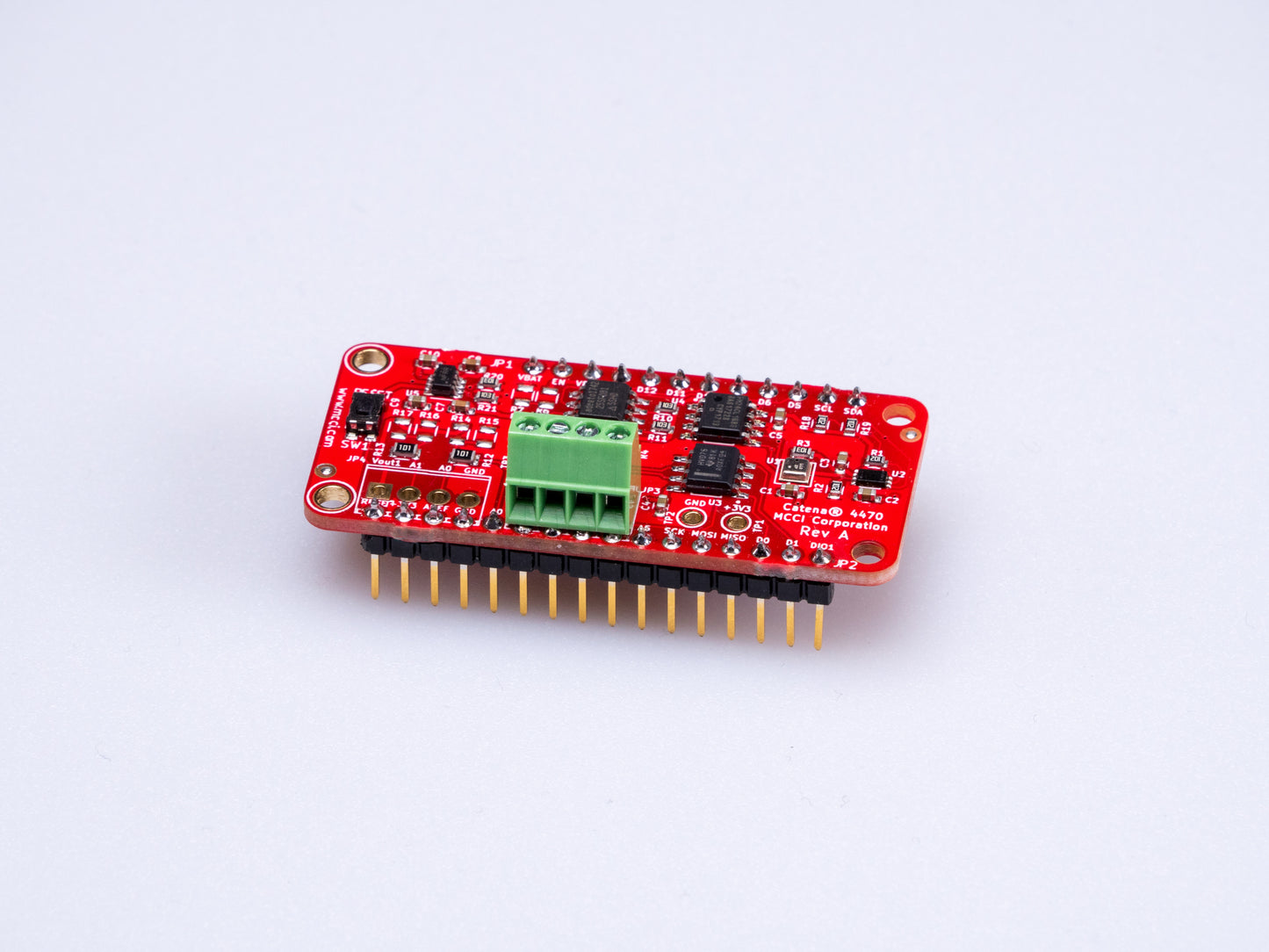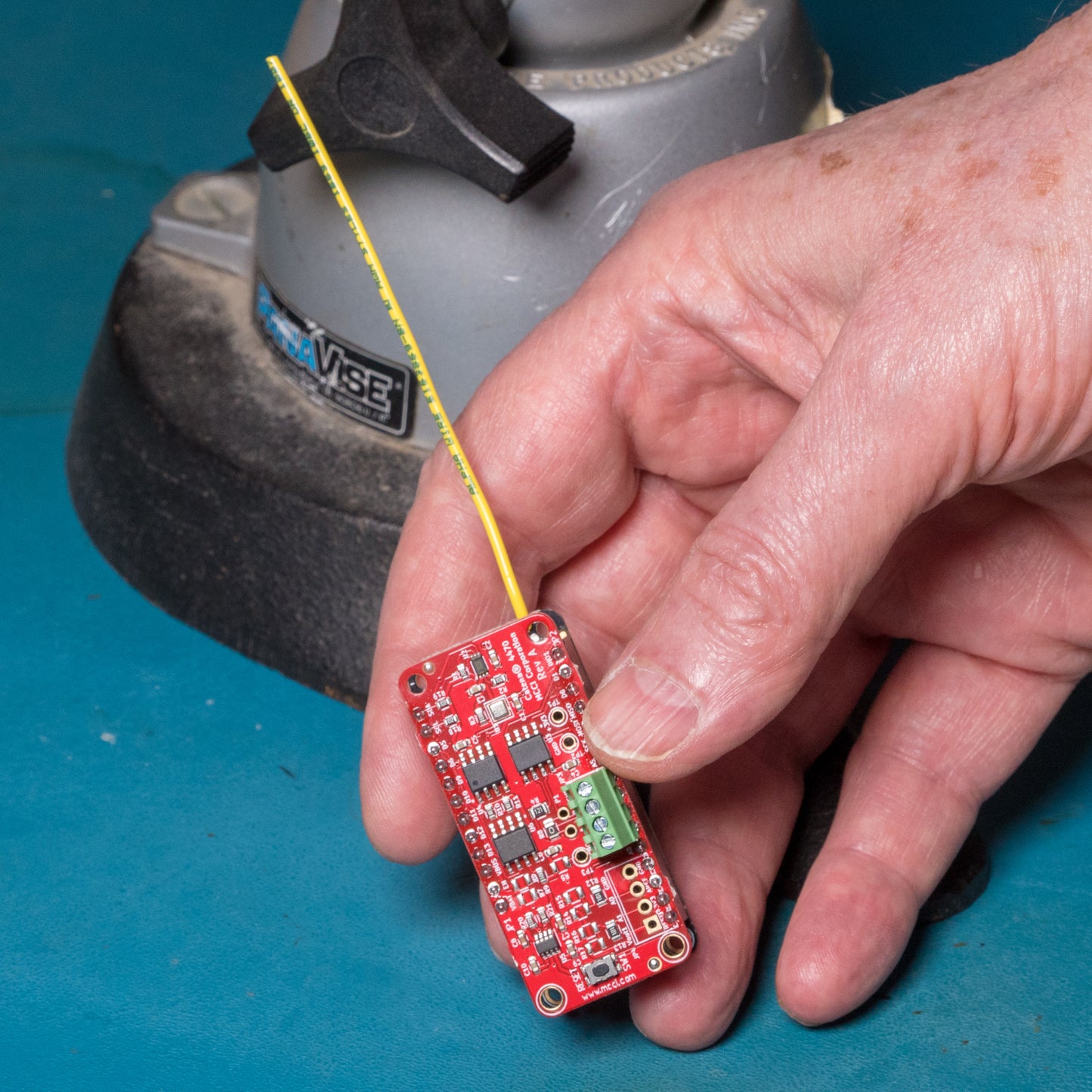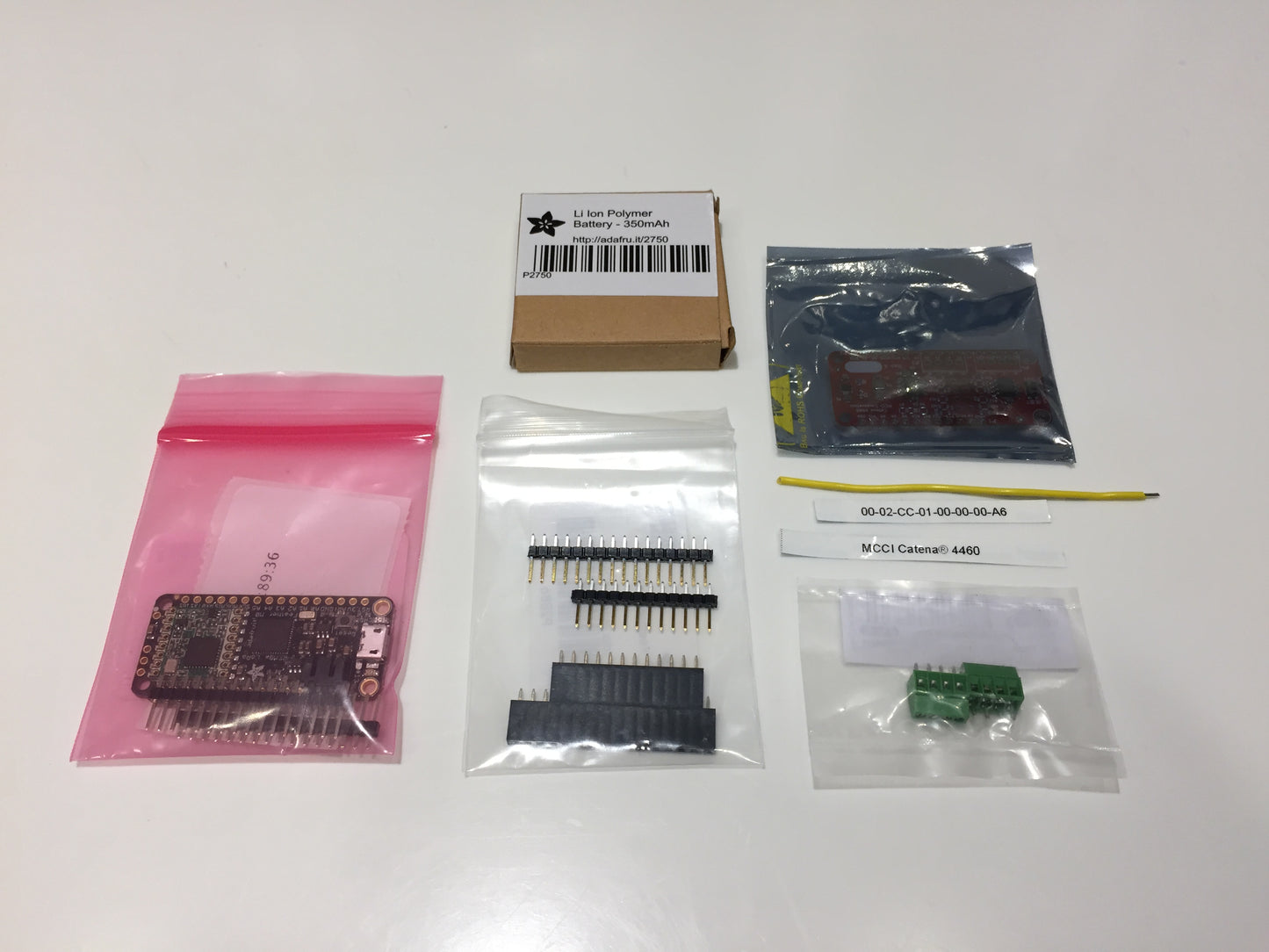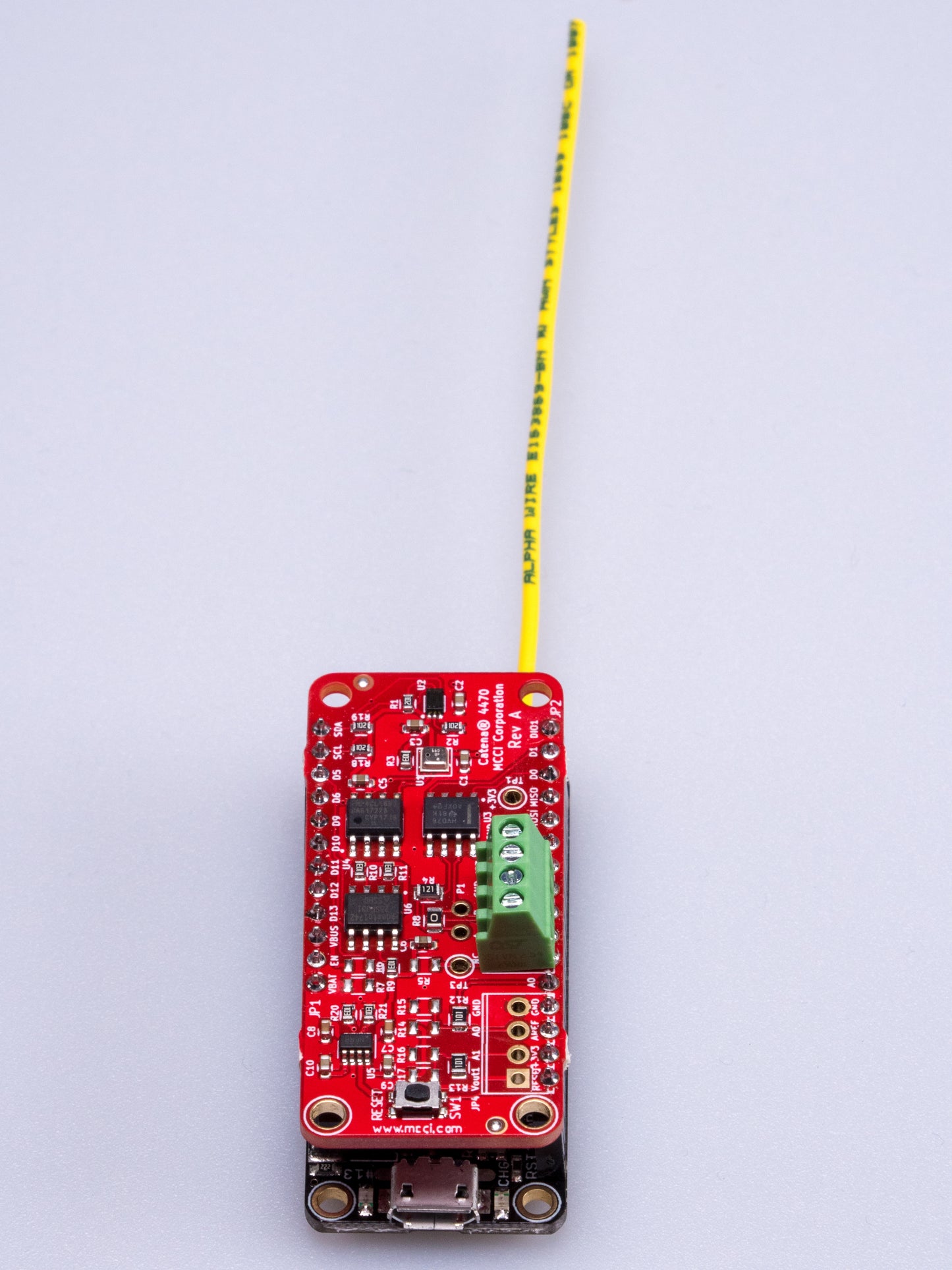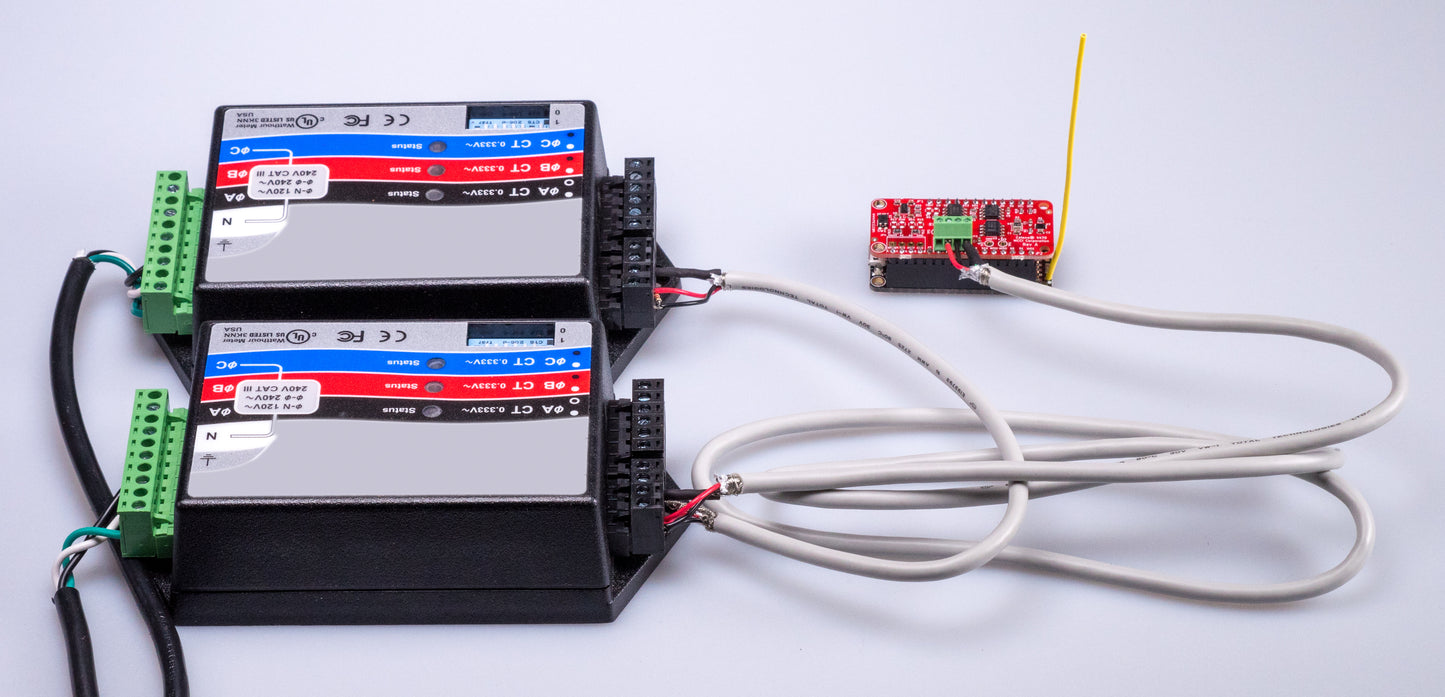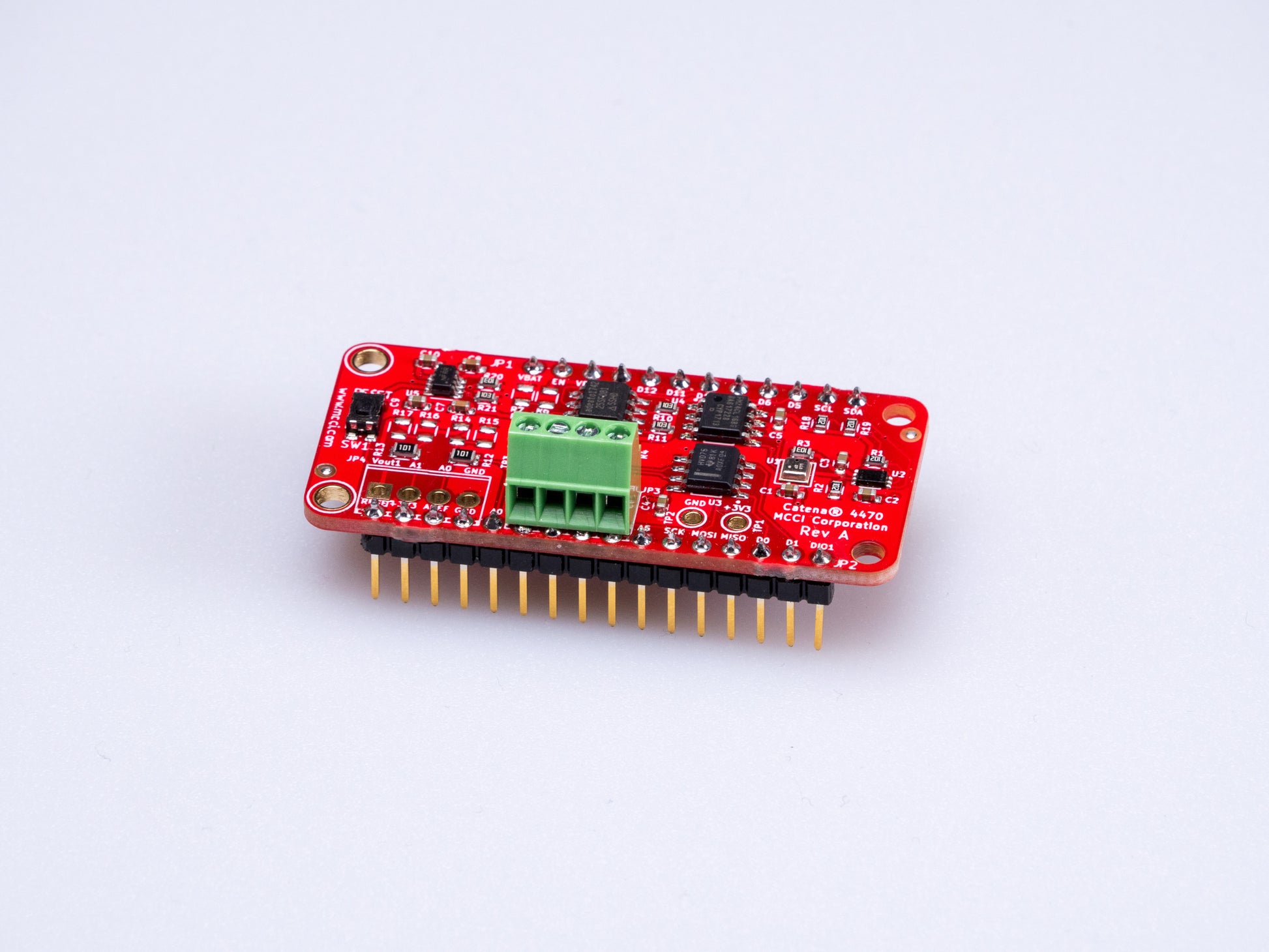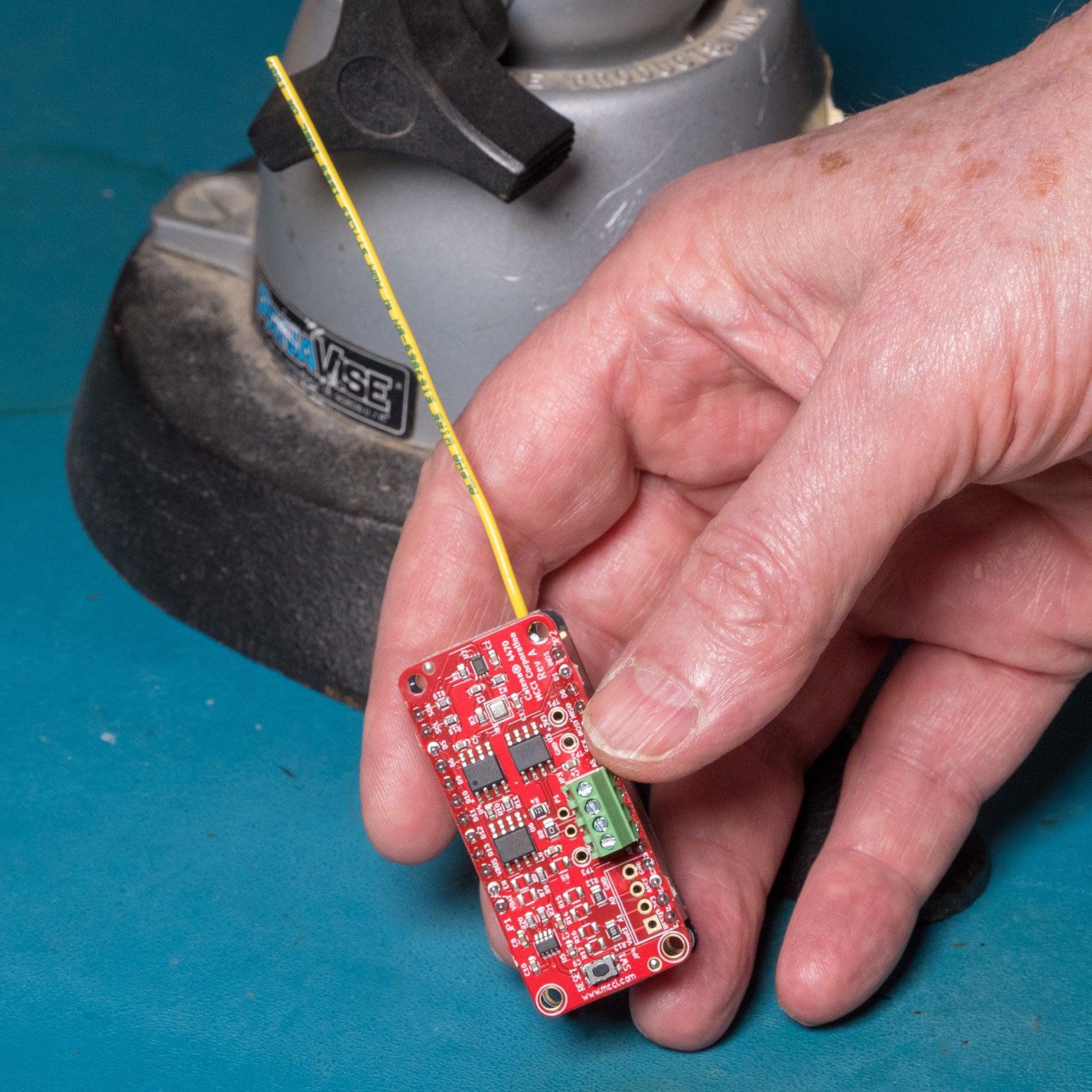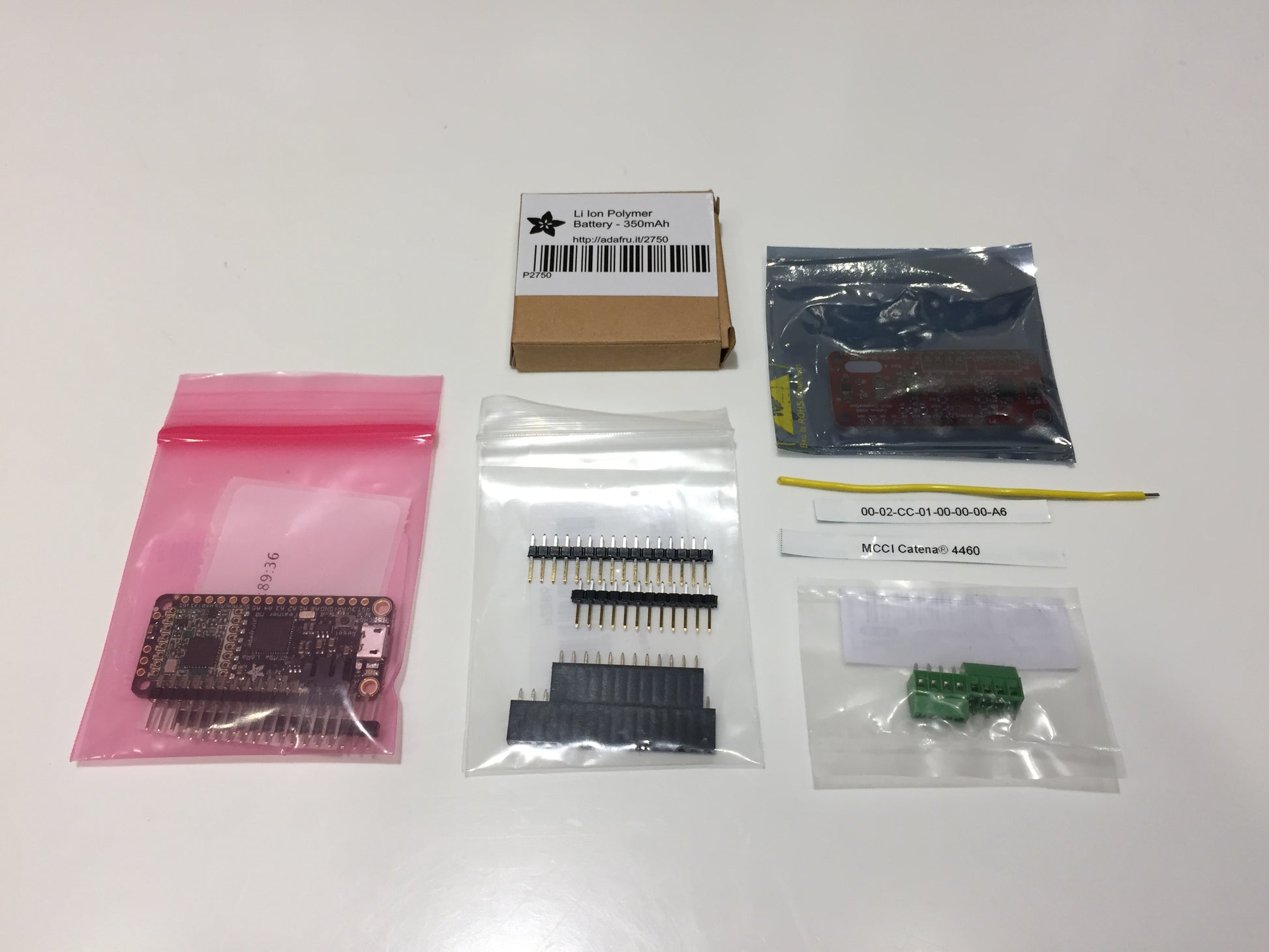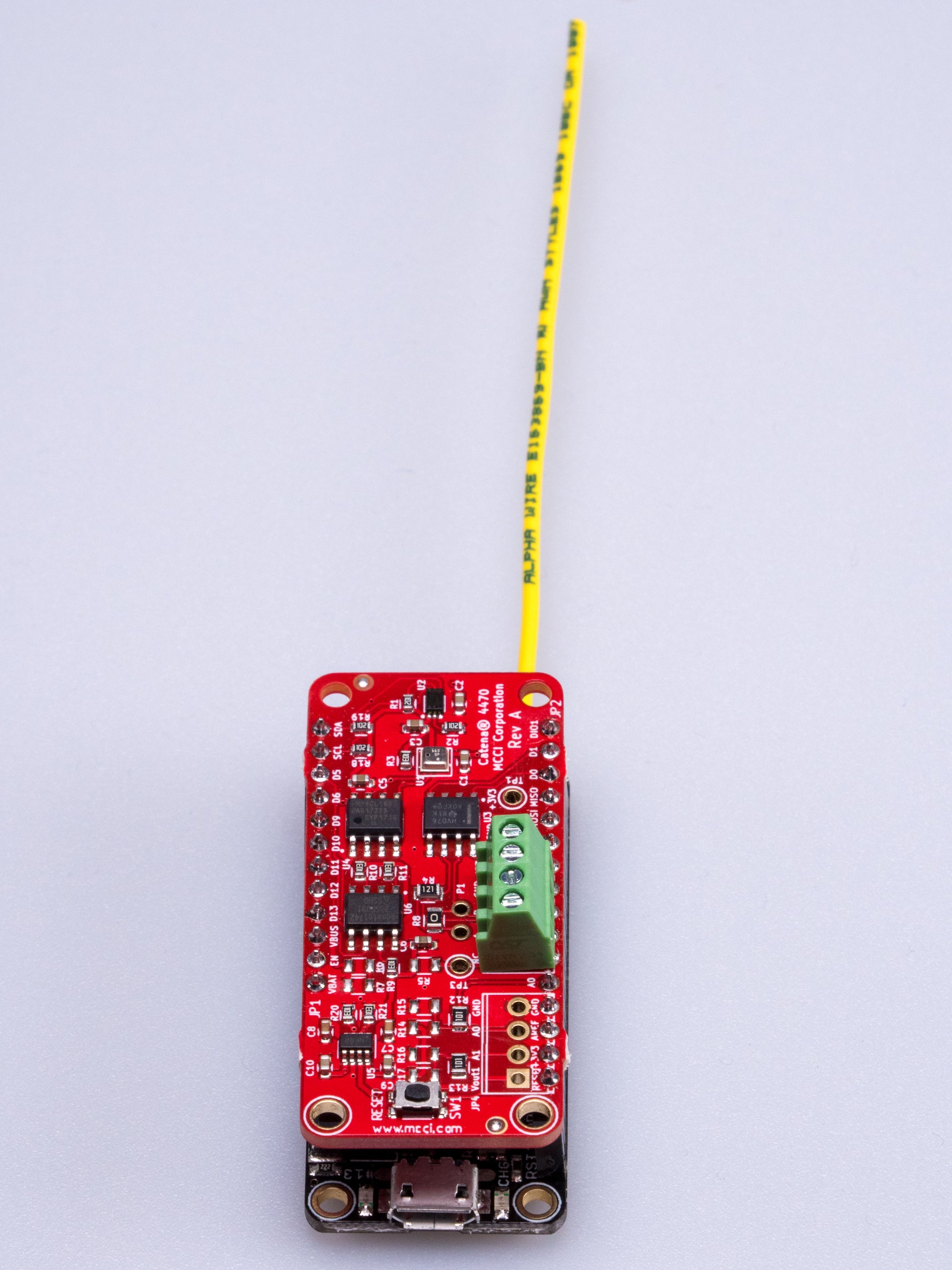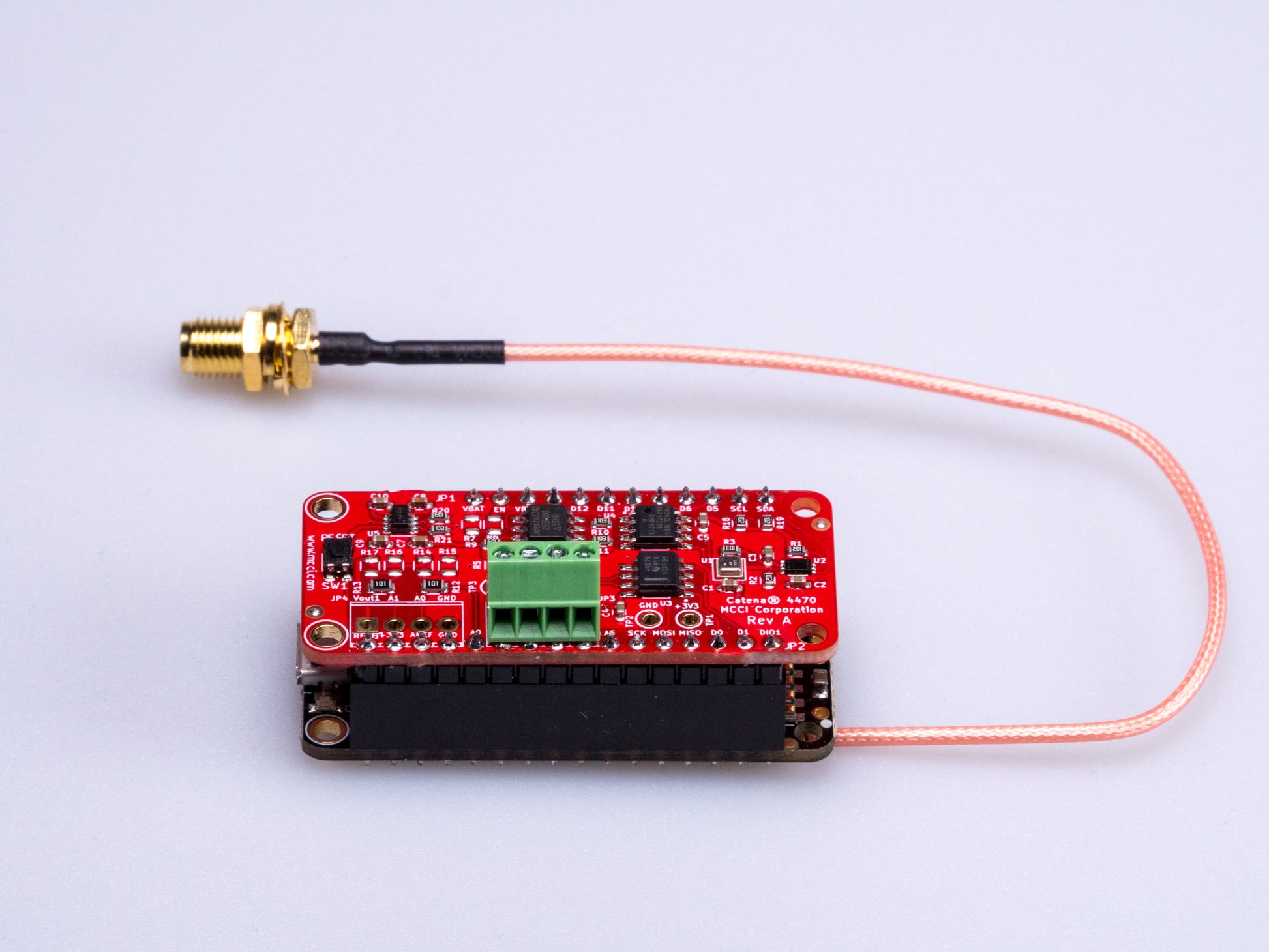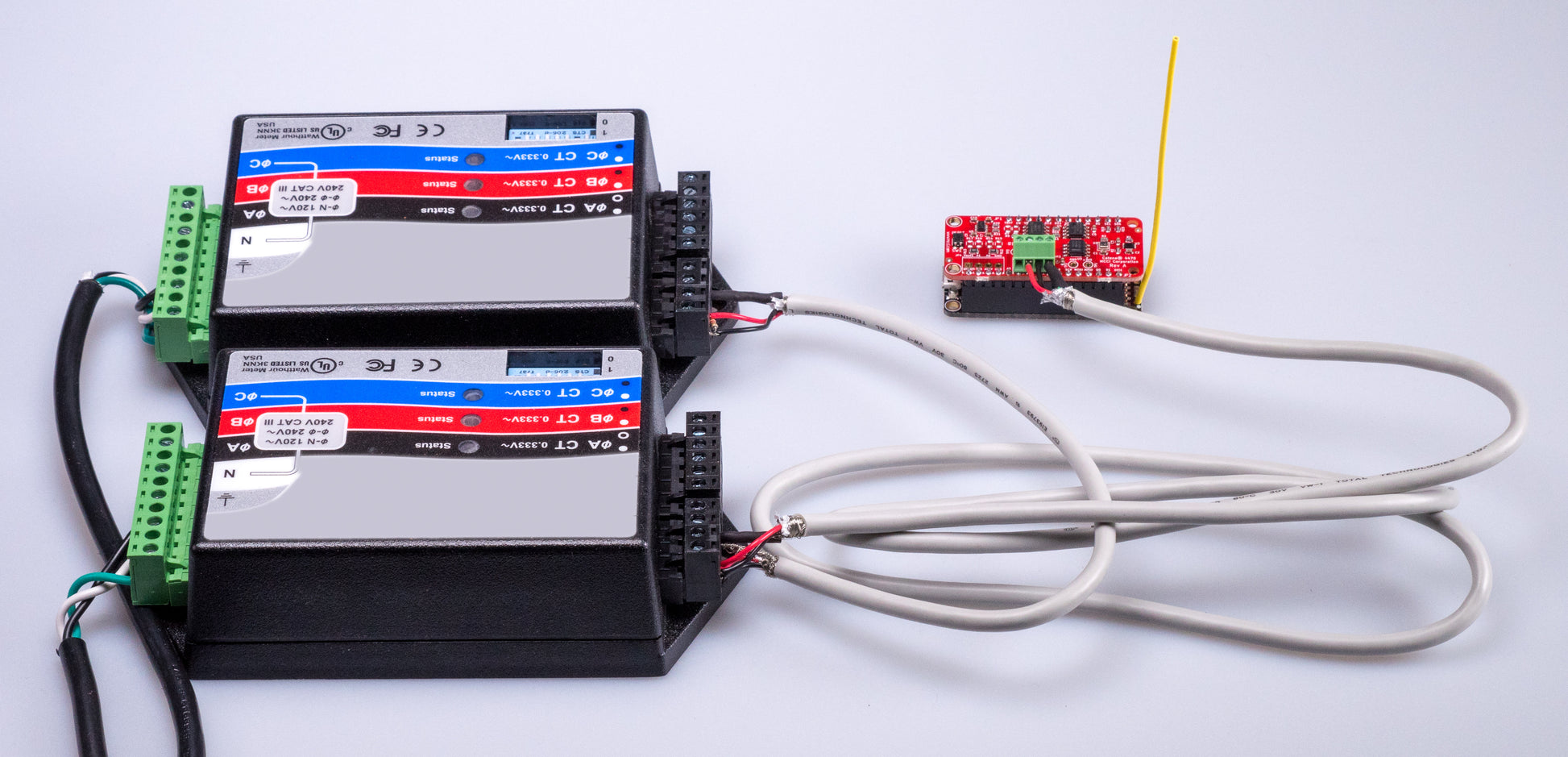MCCI Catena® 4470 Modbus Node for LoRaWAN® technology
MCCI Catena® 4470 Modbus Node for LoRaWAN® technology
SKU:123001349
Out of stock — Available on backorder
Couldn't load pickup availability
The MCCI Catena® 4470 Modbus Node for LoRaWAN® technology is a powerful open-source IoT device that integrates Modbus control with The Things Network. Based on the Adafruit Feather M0 system, the Catena 4470 is a ready-to-use platform for Modbus-oriented LoRaWAN 1.0.2 and 1.1 wireless IoT applications.
The Catena 4470 can also be used to add Modbus and sensing to any member of the Adafruit Feather system.
As a Modbus controller, the Catena 4470 can control a large number of Modbus devices and communicate results via the LoRaWAN network, limited only by system memory and polling rate. As a Modbus device, the Catena 4470 can bridge an existing Modbus controller to the LoRaWAN network.
Although it's available in several variants, the recommended base configuration consists of:
- The Adafruit Feather M0 board. Features:
- ARM Cortex M0 CPU at 48 MHz
- 256 kilobytes of flash program memory
- 32 kilobytes of static RAM
- 900 MHz LoRa® radio from Hope RF
- USB port for charging and programming
- Compatible with a wide range of Adafruit Feather Wings
- Battery charging circuit for LiPo batteries
- Fifteen I/O pins with a variety of supported protocols
- The Catena 4470 sensor wing, including:
- RS-485 transceiver for connecting to Modbus, with 120 ohm termination;
- Screw terminals (on the assembled models) for connecting to the Modbus field wiring, and for connecting to additional external sensors.
- Processor-controlled power switches for the RS485 transceiver and the external sensors.
- Bosch BME280 sensor, measuring temperature, humidity, and barometric pressure;
- Rohm BH1750 lux sensor, measuring from 0 to 65,536 lux of ambient light;
- 2 kbytes of ferro-electric RAM (FRAM) for non-volatile storage of network parameters, session keys, and application data (fully meeting requirements of LoRaWAN 1.1);
- One megabyte of SPI flash, for use for staging firmware-over-the-air and local data storage;
- A whip antenna.
- A 350 mAh Lithium Polymer ("LiPo") battery.
All units (other than the WING-ONLY and DIY-KIT variants) are shipped assembled and tested, with built-in software that is ready for use with The Things Network.
With suitable software, the radio supports the common LoRaWAN band plans used in the United States and Europe. The standard whip antenna is tuned for the selected region. Boards with the "U.FL" suffix are shipped programmed for the US bandplan, but can be reprogrammed and used with external antennas suitable for any supported region.
A number of variants are available as standard products.
The BASE, M101 and M102 variants are all complete units. They vary only in the population of the resistor option field. The M101 is configured for use in electric power monitoring applications. The M102 is configured for use with external sensors for smart agriculture applications. The BASE unit leaves the resistor field and screw terminals unpopulated to allow users to make their own adaptations.
The DIY-KIT variant is sold unassembled, but gives the most flexibility for use and deployment.
The DIY-FACTORY variant is the DIY-KIT assembled and tested.
The WING-ONLY variant is the Catena 4470 wing without the CPU board, and without headers. It is great for experimenters who want to breadboard more complex solutions.
Software is available from github at https://github.com/mcci-catena/.
The datasheet is available here.
Assembled units are built to order; delivery is normally one week ARO.
Contact MCCI for complete solutions based on the Catena 4470 (email techsupport@mcci.com, or check our contacts page).
LoRa is a registered trademark of Semtech Corporation. LoRaWAN is a registered trademark of the LoRa Alliance. MCCI and MCCI Catena are registered trademarks of MCCI Corporation. All other trademarks are the property of their respective owners.
